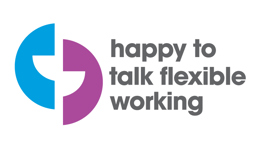18 October 2022
How to Support your Staff’s Mental Health in the Post-Pandemic Workplace
Whilst the imminent sense of threat from Covid-19 has diminished over the course of 2022, the pandemic has had lasting effects on employees’ mental health and working life. In this article, we review some of the latest research on workplace wellbeing and introduce Lifelink’s brand new Business Service, which can help you build a psychologically safe and nurturing environment to combat the mental health challenges of this “new normal”.
Research on Employee Mental Health after Covid
The Labour Force Survey (Health & Safety Executive, 2021) reported that stress, depression or anxiety accounted for 50% of all work-related ill health cases in 2020/21, with 55% of them caused or exacerbated by the impacts of Covid-19. A longitudinal study comparing workers’ wellbeing before and during the pandemic suggested this psychological distress increased across all industries, socioeconomic classes and occupations (Kromydas et al., 2022). Women were disproportionately affected due to additional childcare and/or home-schooling responsibilities.
Research conducted on post-pandemic work stress and the long-term impact of lockdowns is only just emerging. People Management (2021), quoting a survey conducted by Glassdoor, warned that employee burnout increased by 128% following the ease of Covid restrictions, and 52% of workers struggled to maintain a healthy work-life balance. Whilst many businesses have shifted to hybrid working models, this is not possible in all industries and conflicting reports suggest, even where it is feasible, it is not a panacea for improving staff wellbeing.
The Office for National Statistics (2022) states that almost a quarter (24%) of workers have been splitting their work hours between their office and home, with 78% of them reporting a better work-life balance and 47% benefitting from improved wellbeing. However, a survey by Skynova claims that absence rates due to mental health reasons are higher in staff who work all or some of the time at home. 75% remote workers and 82% hybrid workers took at least one day off for mental health reasons, compared to 50% on-site workers. In reporting these figures, HR Magazine (2022), urges companies to pay more attention to employee mental health and find new ways to support those who do not work on-site full time. Furthermore, an article in Forbes (2022) recommends, “tactics to support the psychological safety of employees, create environments that welcome mental health conversations, and offer strong support systems are crucial to meeting the demands of the ‘next normal’ in the workplace.”
How can Lifelink help?
We have launched a brand new Business Service, dedicated to helping companies of all sizes, across all sectors, support and enhance the wellbeing of their workforce.
Our services to businesses include:
- A one-to-one employee counselling service (delivered via phone or video), quickly accessed by any staff member, offering support from one of our qualified counsellors
- Wellbeing workshops to create a safe space for mental health conversations in the workplace and teach self-care techniques
- And a wellbeing supervision programme, based on Lifelink’s own internal supervision system, providing more structured support to employees whose working environments may make them particularly vulnerable to negative mental health.
If you would like to speak to us about your company’s bespoke needs, fill out our business enquiry form and we’ll help you devise a strategy to build a happier, healthier employee wellbeing culture.
Share this page
Website by Radiator Digital
- Privacy & Cookies
- Accessibility
- Complaints Procedure
- Site Map
- Contact Us
- © 2023 Lifelink

















